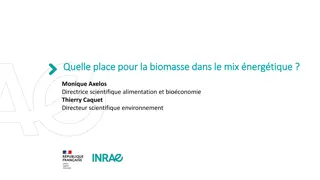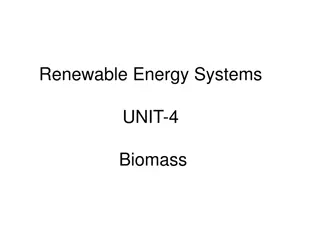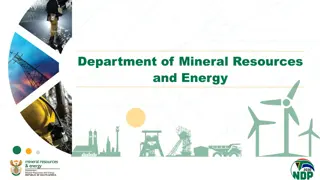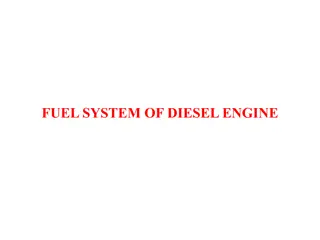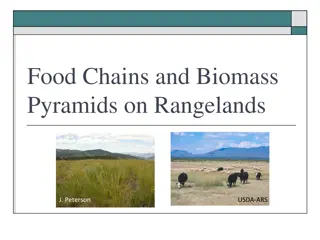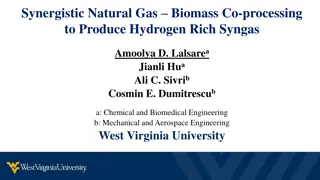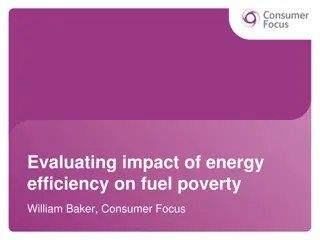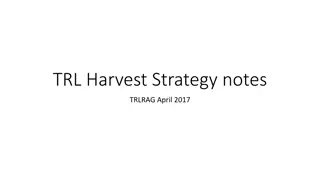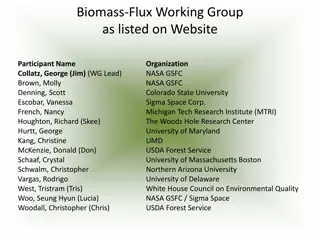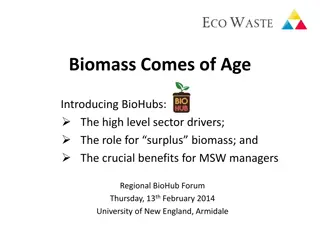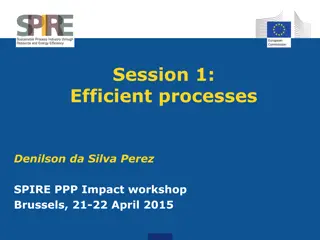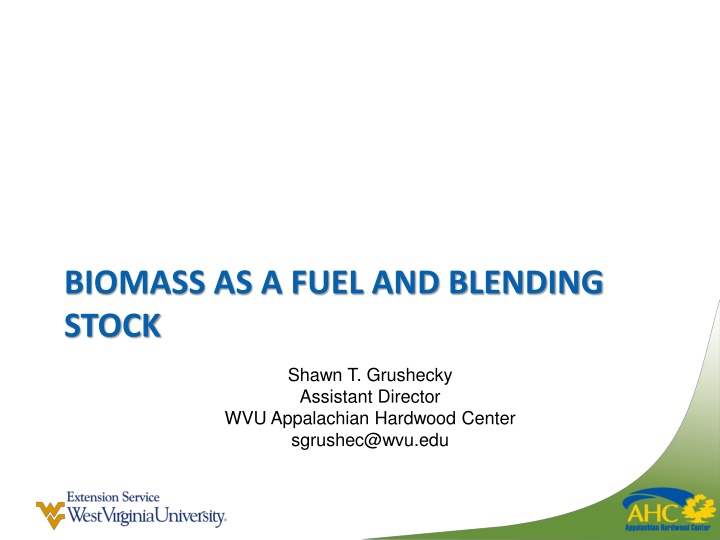
Wood Biomass in West Virginia: Energy Portfolio Benefits and Research Initiatives
Discover the importance of wood biomass in West Virginia's energy portfolio, including its renewable and sustainable nature, minimal environmental impact, and local production. Explore the biomass production potential in the state and learn about the bioenergy research team at WVU working on sustainable feedstock development, biofuels, and more. Dive into topics like torrefied wood and the Coal/Biomass Conference, highlighting opportunities, research, and clean energy development with coal. For more information, visit http://ahc.wvu.edu.
Download Presentation

Please find below an Image/Link to download the presentation.
The content on the website is provided AS IS for your information and personal use only. It may not be sold, licensed, or shared on other websites without obtaining consent from the author. If you encounter any issues during the download, it is possible that the publisher has removed the file from their server.
You are allowed to download the files provided on this website for personal or commercial use, subject to the condition that they are used lawfully. All files are the property of their respective owners.
The content on the website is provided AS IS for your information and personal use only. It may not be sold, licensed, or shared on other websites without obtaining consent from the author.
E N D
Presentation Transcript
BIOMASS AS A FUEL AND BLENDING STOCK Shawn T. Grushecky Assistant Director WVU Appalachian Hardwood Center sgrushec@wvu.edu
Why is wood biomass an important component of a WV energy portfolio? Advantages of woody biomass: Is available Is renewable & sustainable Minimal heavy metals and sulfur Can reduce waste streams Does not increase atmospheric levels of CO2 Locally produced Source:woodforgood.com
Biomass Production Potential Logging residues: 1,528,800 tons Log landings: 509,600 tons Mill residues: 1,252,650 tons Surface mine residues: 353,407 tons Total: 3,644,457 tons per year
BIOENERGY RESEARCH TEAM AT WVU >$19 million funding, 120 journal papers in 5 years RA 1 - Sustainable Feedstock Development. Breeding and genetic engineering for improved energy crops; Harvesting and supply-chain related logistical systems; Integrated preprocessing technologies. RA 2 Biofuels and Hybrid Bio-Fossil Product Development. Novel bio-chemical separations to produce clean fractions; Biofuel/biochemical products from biomass carbohydrates; Hybrid system for lignin-biomass/coal blends for synthetic gas, electricity, and liquid fuels. RA 3. Biofuels and Bioproduct Development Analysis. Life cycle analysis and system modeling; Fossil fuel displacement, sustainability and rural economic development; Commercialization through relationships with industrial partners.
TORREFIED WOOD Heating wood at low O2 high temp condition (400- 600 F) 20 % mass loss, 10 % energy loss Final product hydrophobic Co-fired directly with coal, raw material for liquids, steel production WVU Samples ~ 9500- 10,000 BTU/LB
Coal/Biomass Conference Sept 19th 2012 Topics Coal/Biomass Opportunities Bioenergy Research Energy policy and environmental impacts Business Perspective torrefied wood Economic and Technical Feasibility of CBTL Clean Energy Research and Development with Coal Carbon Capture Technology More info - http://ahc.wvu.edu

